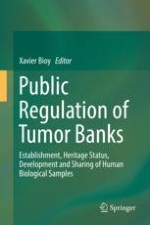2018 | OriginalPaper | Chapter
12. Commercialization Through the Use of Private Law Contracts
Author : Laurent Izac
Published in: Public Regulation of Tumor Banks
Publisher: Springer International Publishing
Activate our intelligent search to find suitable subject content or patents.
Select sections of text to find matching patents with Artificial Intelligence. powered by
Select sections of text to find additional relevant content using AI-assisted search. powered by
